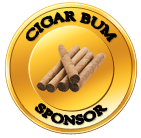Hi Mark,
(how've you been and how's the Jacopo smoking?)
Sorry for the tardy response.
I'm not a chemist so I can't comment on the differences in bacterial activity between Spam and Balkan Sobranie but you seem to be comparing flesh to wood and their rotting rates rather than their ageing. In all my years of making, selling and smoking tobacco the changes are only consistent with the marrying of the flavors between fermented leaves and not with the accumulation of tens of trillions of little bacterial sh*tlettes. The impacting bacterial activity in tobacco occurs when the leaf is fermented not when it's stored otherwise you get mold.
The changes in tobacco occur with air present or none at all but no change occurs if the leaf is dry. Pressure and temperature affect the rate of change but both of these influences are used during tobacco processing and their effect is known and these changes are not bacterial.
Urban legend is that Robert Rex of Drucquers Tobacconist (SF) started 'ageing' when they found a bag of their popular Cooks #5 tobacco that had been sitting around for some time. When tasted it was not only still good, many though it was superior. Robert told me this story himself in 1981 sp now you can decide if Drucquer's started the tobacco ageing craze or not. Robert sold the store the following year to open a winery (http://www.deerfieldranch.com/Winery/Winery.index.html). People have compared the ageing of tobacco to that of wine, perhaps started by Robert himself, where the agents of change are thought to be the same.
Wines and tobacco change by chemical reaction. We'd need the chemist to explain the differences between the two because wine is a liquid and tobacco only needs moisture for the changes to occur but marrying or ageing is the interaction between leaf over time when stored in a moist form where they take on characteristics of other leaf, even of he same variety.
Regards,
Pete
User Tag List
Results 1 to 10 of 52
Threaded View
-
03-19-2015, 01:30 AM #19True Derelict


- First Name
- Pete
- Join Date
- Mar 2015
- Location
- Back in Huntington
- Posts
- 1,654
- Ring Gauge
- 535
- Mentioned
- 178 Post(s)
- Tagged
- 0 Thread(s)










 Reply With Quote
Reply With Quote